In this article, we will explain how to learn Python effectively. You should know that "data science" is the science of solving and exploring problems and extracting valuable information from data.
To do this effectively, you'll need to curate data sets, train machine learning models, visualize results, and more.
This is the perfect time to learn Python.
In fact, Forbes ranks it among the top 10 technical skills in terms of growing job demand. Today let’s discuss why this is…
Why learn Python?
Python is one of the most widely used languages in the world, and it has a passionate user community: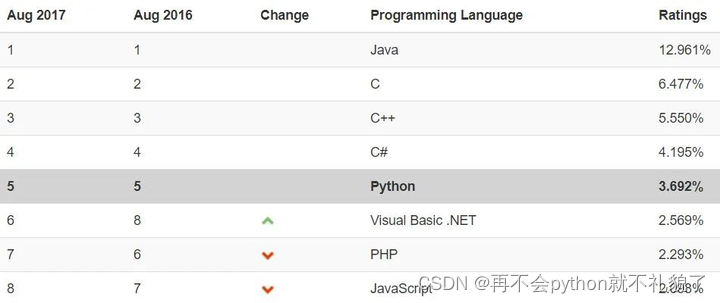
It has a more loyal following among the data science profession.
Some people judge the quality of a programming language by a simple "Hello, world!" By this standard, Python does a pretty good job:
1 print( "hello, world!" )
For comparison, here is the same output in Java:
1 public class Main {
2 public static void main(String[] args) {
3 System.out.println("hello, world!");
4 }
5 }
Well, seriously, simplicity is one of Python's greatest strengths. Due to its precise and efficient syntax, Python can accomplish the same task with less code than other languages. This makes the speed of implementing solutions refreshing.
Additionally, Python's vibrant data science community means you'll be able to find plenty of tutorials, code snippets, and fixes for common errors. Stackoverflow will become one of your best friends.
Finally, Python has an all-star lineup of libraries (also called packages) for data analysis and machine learning, which greatly reduces the time it takes to produce results. More on these later.
How to learn Python effectively?
Before we discuss what you need to learn, let’s discuss what you don’t need to learn. You don't need a CS degree. Most data scientists will never deal with topics like memory leaks, cryptography, or "Big O" notation. As long as you can write clean, logical code using a scripting language like Python or R, you'll be fine.
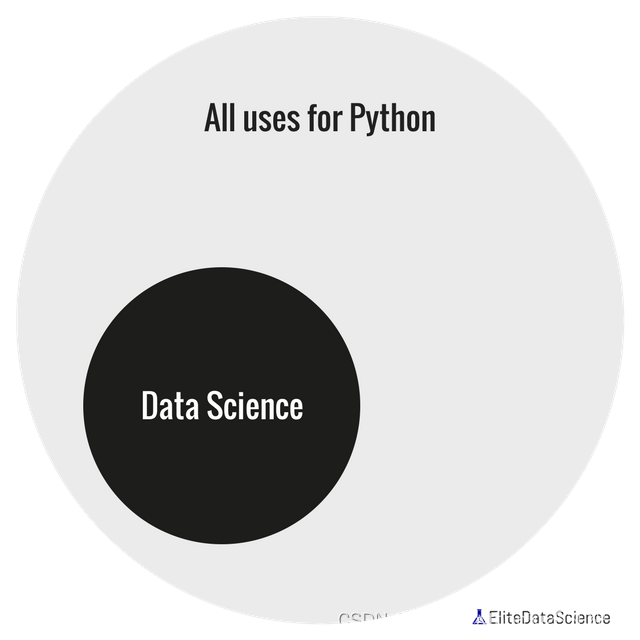
You don't need to remember all the syntax. Instead, focus on mastering intuition, such as when a function is appropriate or how conditional statements work. After googling, reading documentation and good practice, you will gradually memorize the syntax.
We recommend a top-down approach. We promote a top-down approach, where the goal is to get results first and then solidify concepts over time.
In fact, after completing classroom learning, we can move on to real-world practice.
1. You will start by learning core programming concepts.
2. Next, you will gain practical knowledge of basic data science libraries.
3. Finally, you will practice and perfect your skills through actual projects.
This method allows you to have more fun and master it quickly.
Step 1: Core Programming Concepts
Effective programming is not about memorizing syntax, but mastering a new way of thinking. So take the time to build a solid foundation in core programming concepts. These will help you translate solutions in your head into instructions for your computer.
**
If you are new to programming…
**We recommend the excellent book Automate the Boring Stuff with Python, which is released online for free under a Creative Commons license. This book promises "practical programming for beginners" and makes every lesson down to earth. Read Chapter 6 - Manipulating Strings and complete the exercises.

If you just need a refresher on Python syntax
Then we recommend the following video: https://youtu.be/N4mEzFDjqtA Again, the goal of this step is not to learn everything about Python and programming. Instead, focus on your intuition.
You should be able to answer the following questions:
• What is the difference between integers, floating point numbers and strings?
• How to use Python as a calculator?
• What is a for loop? When do I write one?
• What is the basic structure of a function?
• How to use conditional statements (if…else…) to add logic?
• How do import statements work?
If you want to practice more core programming concepts
Please review the following resources.
• Code Fights is a platform with a number of short coding challenges that can be completed in under 5 minutes (although it's so much fun you might find yourself playing for hours at a time). You'll earn points and unlock new levels along the way, which is also a great way to track your progress...
• Python Challenge is one of the coolest puzzles on the web, so don't be intimidated by its 1990 graphics. You can complete all 33 levels with the help of Python scripts. One user called it "an addictive way to learn the ins and outs of Python..." I agree!
• http://PracticePython.org is a collection of short exercises in Python. It is updated with a new issue almost every week. What's really nice is that the author has included multiple user-submitted solutions for each problem, so you can see alternative ways of solving them.
• How to Think Like a Computer Scientist is a great interactive online book that takes a whirlwind tour through key programming concepts (using Python). If you're completely new to programming, this might be a good option. It's like a condensed "CS 101" course.
Step 2: Basic Data Science Libraries
Next, we will focus on the data science part of “How to learn Python for data science”. As we mentioned before, Python has an all-star collection of libraries for data science. Libraries are simply bundles of pre-existing functions and objects that you can import into your scripts to save time.
These are our recommended steps for efficiently acquiring new libraries:
1. Open a new Jupyter Notebook (see below).
2. Read the library's documentation for 30 minutes to understand a high-level introduction to its modules.
3. Import the library into your Jupyter Notebook.
4. Follow its step-by-step quick start tutorial to check the operation of the library.
5. Spend another 30 minutes looking at its documentation to see what else it can do.
We don't recommend delving deeper into the library now, as you'll likely forget much of what you learn by the time you get into the project. Instead, aim to discover what each library is capable of.
If you installed Python via the Anaconda bundle as we suggested above, Jupyter Notebook will also come with it. Jupyter Notebook is a lightweight IDE loved by data scientists. We recommend it for your project. You can open a new notebook through the Anaconda Navigator that comes with Anaconda. Check out this short video for instructions.
These are the basic libraries you need:
digital currency
NumPy allows simple and efficient numerical calculations, and many other data science libraries are built on top of it.
• Documentation
• Quick Start Tutorial
panda
Pandas is a high-performance library for data structures and exploratory analysis. It is built on NumPy.
• Documentation
• Quick Start Tutorial
Matplotlib
Matplotlib is a flexible plotting and visualization library. It's powerful but a bit cumbersome. You may now choose to skip Matplotlib and start with Seaborn (see Seaborn recommendations below).
• Documentation
• Quick Start Tutorial
Scikit-Learn
Scikit-Learn is the premier general-purpose machine learning library in Python. It has many popular algorithms and modules for preprocessing, cross-validation, etc.
• Documentation
• Quick Start Tutorial
Bonus: Seaborn
Seaborn makes it easier to draw common data visualizations. It builds on Matplotlib and provides a more pleasant high-level wrapper.
• Documentation
• Quick Start Tutorial
By now, you will have a basic understanding of programming and a working knowledge of basic libraries. This actually covers most of the Python you need to get started with data science.
At this point, some students may feel a little overwhelmed.
It's okay, it's normal. If you take a slow and traditional bottom-up approach, you may not feel overwhelmed, but it will take 10 times longer to get here. The key now is to jump right in and start gluing everything together. Again, our goal here is simply to learn enough to get started. Next, it’s time to solidify your knowledge through lots of practice and projects.
You have several options:
Kaggle competition
The first option is to join Kaggle, a website that hosts data science competitions.
The main advantage of Kaggle is that each project is independent. You'll get datasets, targets, and tutorials to help you get started.
The main disadvantage of competitions is that they often do not represent real-world data science. "Beginner" tournaments are too basic, and standard tournaments (i.e. tournaments with prize pools) are often too difficult for beginners. If you're interested in this path, check out our Beginner's Guide to Kaggle.
DIY projects
Another option is to build your own project and choose the dataset that interests you.
The main advantage of this approach is that projects are more representative of real-world data science. You may need to define your goals, collect data, clean datasets, design features, and more.
The downside to DIY projects is that you need to already be familiar with proper data science workflows. Without one, you might miss important steps or get stuck without knowing how to proceed.
Technical reserves about Python
Here I would like to share with you some free courses for everyone to learn. Below are screenshots of the courses. Scan the QR code at the bottom to get them all.
1. Python learning routes in all directions
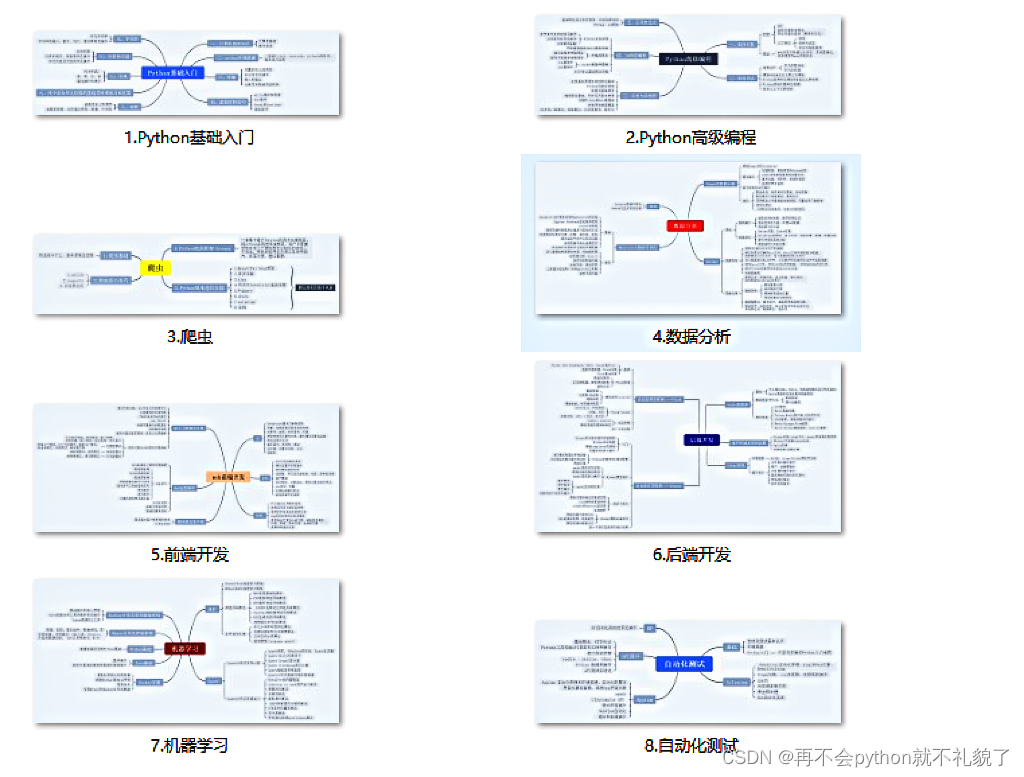
2. Learning software
If a worker wants to do his job well, he must first sharpen his tools. The commonly used development software for learning Python is here, saving everyone a lot of time.
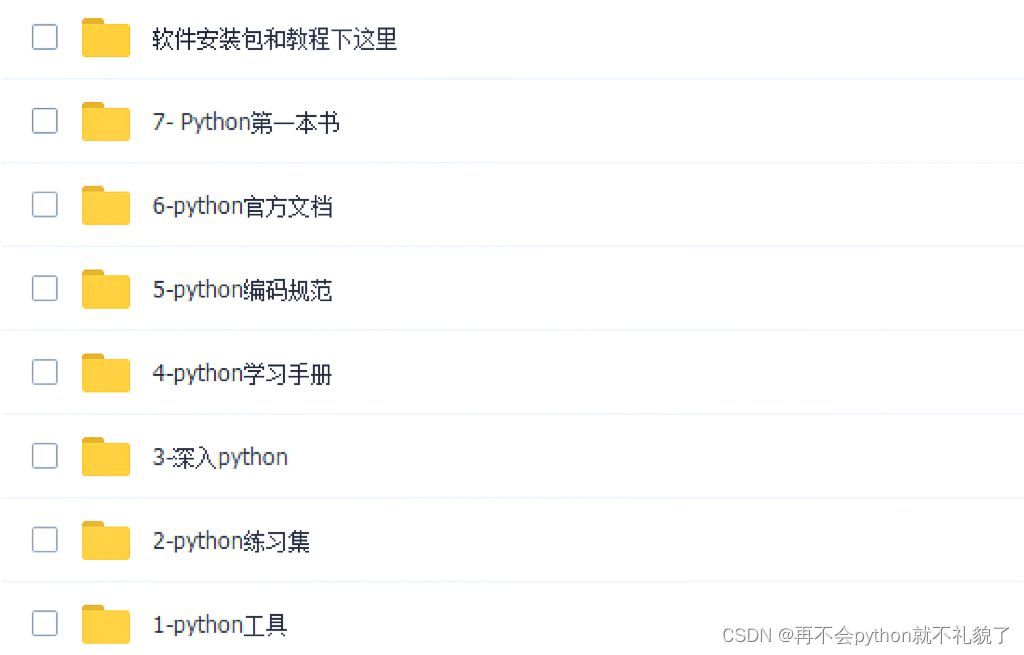
3. Study materials
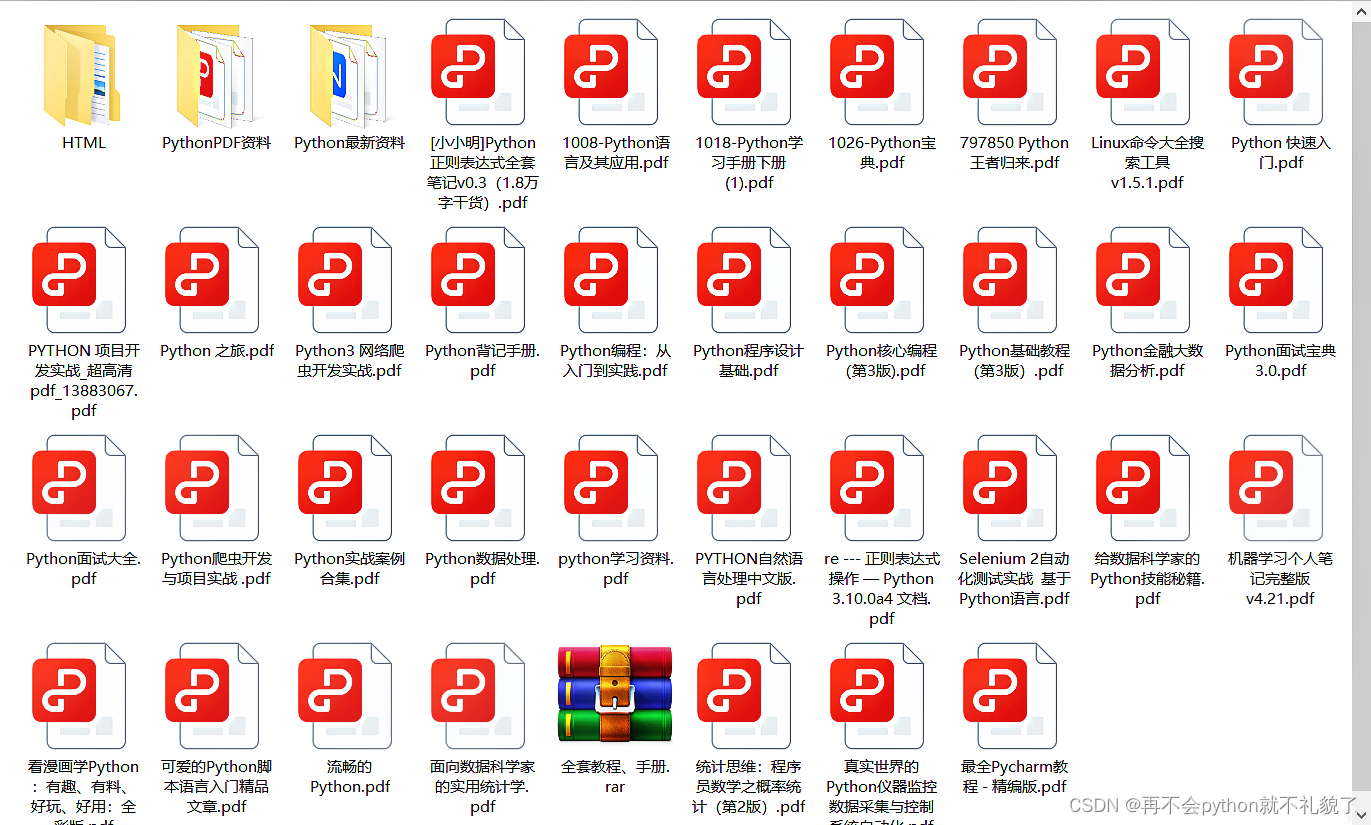
4. Practical information
Practice is the only criterion for testing truth. The compressed packages here can help you improve your personal abilities in your spare time.
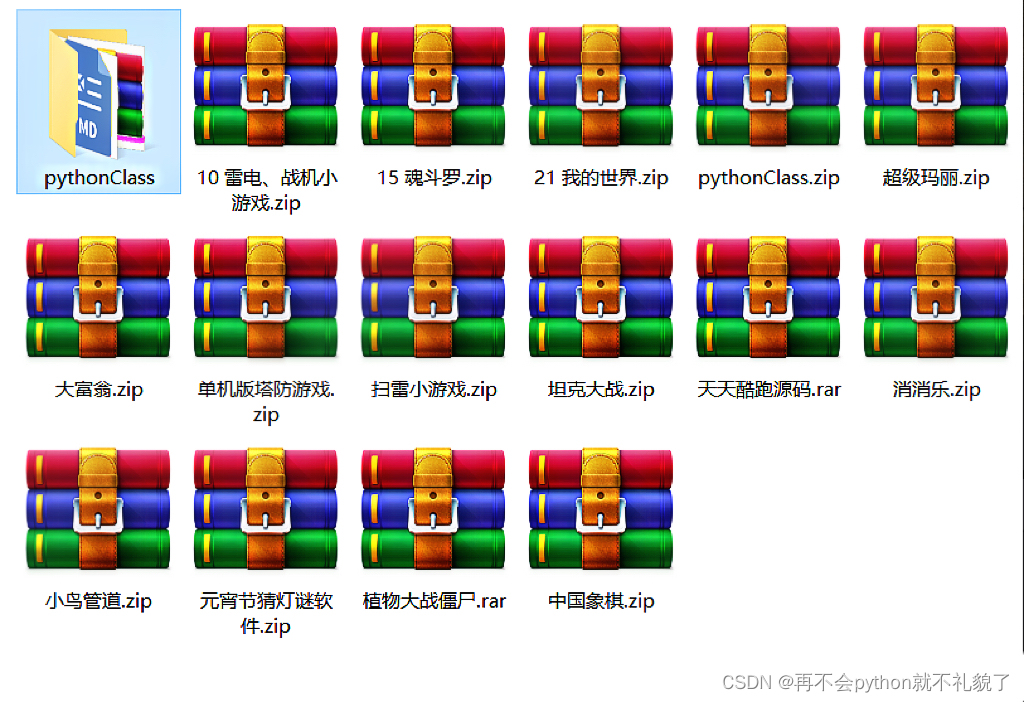
5. Video courses
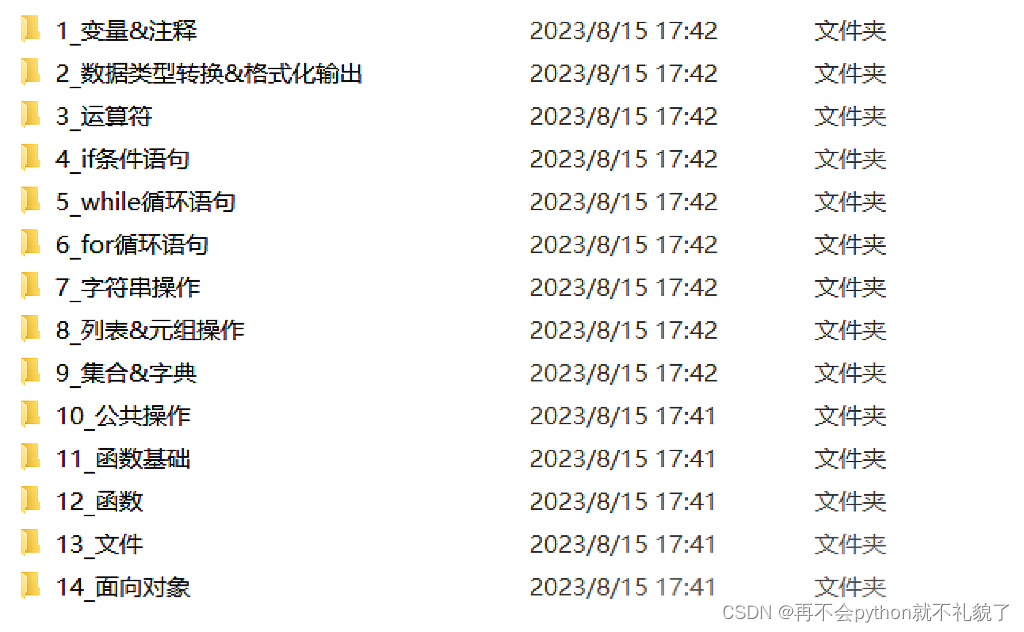
Well, today’s sharing ends here. Happy time is always short. Friends who want to learn more courses, don’t worry, there are more surprises~